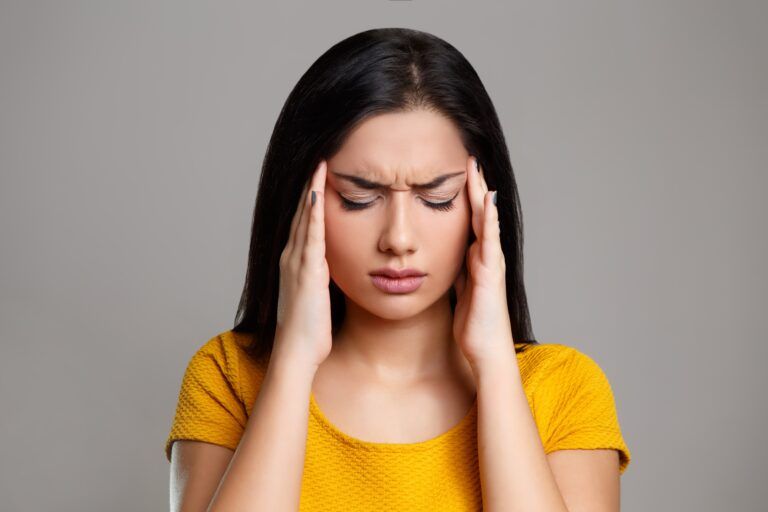Migraines are more than just severe headaches. They are a complex neurological disorder that affects millions of people worldwide. Within the realm of migraines, there exists a spectrum of different types, each with its own unique characteristics, triggers, and treatment approaches. Understanding these distinct types of migraines is crucial for accurate diagnosis and effective management. From the classic migraine without aura to the sensory experience of migraines with aura, and from the paralyzing episodes of hemiplegic migraines to the balance issues of vestibular migraines, exploring the various types provides valuable insights into the diverse nature of this condition. In this blog, we will delve into each type, shedding light on their defining features and equipping readers with knowledge that can help them better navigate the world of migraines.
Migraine without Aura: The Classic Migraine
A migraine without aura, also known as a common migraine, is a type of migraine characterized by severe headaches that occur without the presence of an aura. Auras are sensory disturbances that can manifest as visual changes, such as flashing lights or blind spots, or other sensory symptoms like tingling sensations or difficulty speaking. However, in the case of a migraine without aura, individuals experience the intense headache without any preceding sensory disturbances.
The primary symptom of a migraine without aura is a throbbing or pulsating headache, often affecting one side of the head. The pain can be moderate to severe and is typically accompanied by other symptoms, including nausea, sensitivity to light and sound, and sometimes vomiting. The duration of a migraine without aura can vary from a few hours to several days.
Triggers for migraines without aura can vary among individuals and may include factors such as stress, hormonal changes, certain foods or beverages (such as caffeine or alcohol), changes in sleep patterns, or environmental stimuli like strong smells or bright lights. Identifying and avoiding triggers can be an essential aspect of managing this type of migraine.
Treatment options for migraines without aura range from over-the-counter pain relievers, such as nonsteroidal anti-inflammatory drugs (NSAIDs), to prescription medications specifically designed to alleviate migraine symptoms. Lifestyle modifications, including stress management techniques, regular sleep patterns, and maintaining a healthy diet, can also help reduce the frequency and severity of migraines without aura.
Migraine with Aura: A Sensory Experience
A migraine with aura is a specific type of migraine characterized by a distinctive set of sensory disturbances known as aura, which typically occur before or during the headache phase. Aura symptoms are usually reversible and temporary, lasting anywhere from a few minutes to an hour.
Aura can manifest as various sensory disturbances that affect one or more senses. The most common type of aura associated with migraines is visual disturbances. These may include seeing flickering lights, zigzag lines, blind spots, or experiencing temporary vision loss in certain areas of the visual field.

Other types of aura symptoms can involve sensory experiences, such as tingling or numbness in the face or extremities, or difficulty speaking or finding the right words. Some individuals may also experience auditory hallucinations, where they hear sounds or voices that are not present.
The aura phase is followed by the headache phase, which is typically a severe throbbing or pulsating headache that can last for several hours to a few days. The headache is often accompanied by other symptoms like nausea, sensitivity to light (photophobia), and sound (phonophobia).
It’s important to note that not all migraines are accompanied by aura. Migraines with aura account for approximately one-fourth of all migraines, while the majority of migraines occur without an aura.
The exact cause of migraines with aura is not fully understood, but it is believed to involve changes in brain activity and blood flow. Some individuals may have specific triggers for their migraines with aura, such as certain foods, hormonal fluctuations, stress, or environmental factors.
Treatment for migraines with aura focuses on two aspects: acute relief during an attack and preventive measures to reduce the frequency and severity of migraines. Acute treatments may include over-the-counter pain relievers, prescription medications specifically designed for migraines, or medications targeting the aura symptoms. Preventive measures may involve lifestyle modifications, stress management techniques, regular sleep patterns, and the use of prescription medications specifically aimed at preventing migraines.
Hemiplegic Migraine: A Paralyzing Episode
A hemiplegic migraine is a rare and complex subtype of migraine that is characterized by temporary paralysis or weakness on one side of the body. It is estimated that less than 1% of people with migraines experience hemiplegic migraines. The term “hemiplegic” refers to the paralysis that affects one side of the body.
In addition to the paralysis or weakness, hemiplegic migraines can also involve other neurological symptoms similar to those of a migraine with aura. These symptoms may include:
- Visual disturbances: These can range from blurred vision or seeing flashing lights to partial or complete loss of vision in one eye.
- Sensory changes: Individuals may experience tingling or numbness on one side of the body, typically in the face, arm, or leg.
- Speech difficulties: Some individuals may have difficulty speaking or finding the right words to express themselves, similar to aphasia.
- Severe headache: Hemiplegic migraines are often accompanied by a severe throbbing headache that is typically on one side of the head.
The exact cause of hemiplegic migraines is not fully understood, but it is believed to involve genetic factors and abnormalities in the ion channels of brain cells. Hemiplegic migraines can be further classified into familial hemiplegic migraines (FHM) and sporadic hemiplegic migraines (SHM). FHM is a rare inherited form of the condition, while SHM occurs in individuals without a family history of hemiplegic migraines.
Managing hemiplegic migraines involves a combination of acute treatment for relieving symptoms during an attack and preventive measures to reduce the frequency and severity of migraines. Acute treatments may include medications to alleviate the headache and other symptoms. Preventive measures often involve identifying triggers, such as stress, certain foods, or environmental factors, and making lifestyle adjustments to minimize their impact. In some cases, preventive medications may be prescribed to reduce the frequency of attacks.
Vestibular Migraine: Navigating Balance Issues
A vestibular migraine, also known as migrainous vertigo, is a type of migraine that primarily affects the vestibular system, which is responsible for maintaining balance and spatial orientation. It is estimated that about 1-3% of the general population experiences vestibular migraines.
Vestibular migraines are characterized by episodes of dizziness, vertigo (a spinning sensation), and problems with balance. The dizziness and vertigo can be severe and debilitating, often lasting from a few minutes to several hours. These symptoms may occur before, during, or after the headache phase of a migraine, or they may occur without any accompanying headache.
Other common symptoms of vestibular migraines include:

- Nausea or vomiting: Similar to other types of migraines, vestibular migraines can be accompanied by nausea and sometimes vomiting.
- Sensitivity to motion: Individuals with vestibular migraines may have increased sensitivity to motion, making activities such as riding in a car or looking at moving objects challenging.
- Visual disturbances: Some individuals may experience visual disturbances such as blurred vision, difficulty focusing, or sensitivity to light during a vestibular migraine episode.
- Hearing changes: In certain cases, vestibular migraines can be associated with changes in hearing, such as ringing in the ears (tinnitus) or decreased hearing.
Triggers for vestibular migraines can vary among individuals and may include factors such as stress, hormonal fluctuations, certain foods or beverages, lack of sleep, or environmental stimuli like bright lights or strong odors.
Managing vestibular migraines involves a combination of acute treatment for relieving symptoms during an episode and preventive measures to reduce the frequency and severity of migraines. Acute treatments may include medications to alleviate dizziness and vertigo symptoms, as well as medications for any accompanying headache. Preventive measures often involve identifying triggers and making lifestyle adjustments such as maintaining regular sleep patterns, managing stress, and avoiding known triggers.
Chronic Migraine: Battling Frequent Attacks
Chronic migraine is diagnosed when a person experiences migraines on 15 or more days per month, with at least eight of those days being migraines with headache. It significantly impacts quality of life and requires comprehensive management. Treatment approaches include medications for acute relief, preventive medications, lifestyle adjustments, and complementary therapies such as relaxation techniques and cognitive-behavioral therapy.
Menstrual Migraine: Hormonal Influences
For some individuals, migraines are closely linked to their menstrual cycles. Menstrual migraines occur in relation to hormonal changes, usually within a few days before, during, or after menstruation. The symptoms and triggers of menstrual migraines are similar to other migraines, but treatment may involve hormonal therapies, pain relievers, and lifestyle adjustments tailored to the menstrual cycle.
Cluster Headaches: The Intense “Suicide” Headaches
Cluster headaches, often referred to as “cluster migraines,” are a distinct type of primary headache disorder characterized by severe, recurring headaches that occur in clusters or cycles. Cluster headaches are considered one of the most intense and painful types of headaches a person can experience.
Here are some key features of cluster headaches:
- Intensity and Duration: Cluster headaches are known for their excruciating pain, which is often described as a severe, burning or piercing sensation. The pain is typically focused around one eye or temple, but it can radiate to other areas of the face, head, or neck. Cluster headaches have a rapid onset, reaching their peak intensity within a few minutes and lasting between 15 minutes to three hours. Unlike migraines, which can last for several hours or even days, cluster headaches are shorter in duration.
- Clustering and Cycle Patterns: Cluster headaches occur in cycles or clusters, hence the name. These clusters can last for weeks or months, followed by periods of remission where the individual is headache-free for months or years. During a cluster period, headaches often occur daily, with multiple headaches happening within a 24-hour period, hence the term “cluster.” The headaches tend to have a predictable pattern, often recurring at the same time of day or night.
- Associated Symptoms: Cluster headaches are accompanied by various autonomic symptoms, which are involuntary nervous system responses. These can include a runny or stuffy nose, nasal congestion, watery eyes, drooping eyelids, facial sweating, or a sense of restlessness or agitation.
- Triggers: Specific triggers for cluster headaches can vary among individuals, but common triggers include alcohol consumption, exposure to certain odors or strong smells, changes in sleep patterns, and high altitudes.
- Male Predominance: Cluster headaches are more common in men, with a male-to-female ratio of about 3:1.
Management of cluster headaches typically involves two approaches: acute treatment to relieve the pain during an attack and preventive measures to reduce the frequency and severity of future episodes. Acute treatments may include the use of high-flow oxygen therapy, triptan medications, and other pain relief medications. Preventive measures may involve medications taken daily or during cluster periods to prevent or reduce the occurrence of headaches.
Other Types of Migraines: Exploring Rare Variants
In addition to the mentioned types, there are several other rare variants of migraines. These include retinal migraines, which cause temporary vision loss; ocular migraines, which involve visual disturbances without headache; chronic paroxysmal hemicrania, characterized by frequent short-lasting attacks; and hemicrania continua, a continuous headache with intermittent spikes of severe pain. Though these variants are less common, understanding them is important for accurate diagnosis and appropriate treatment.
In Conclusion
Migraines are a complex and diverse neurological disorder, with each type having its own set of symptoms, triggers, and management strategies. Accurate diagnosis and understanding the specific type of migraine an individual experiences are crucial for effective treatment. If you suffer from migraines, it is important to consult a healthcare professional for proper evaluation and guidance. Remember, you are not alone, and there are resources available to help you manage and navigate the spectrum of migraines.




